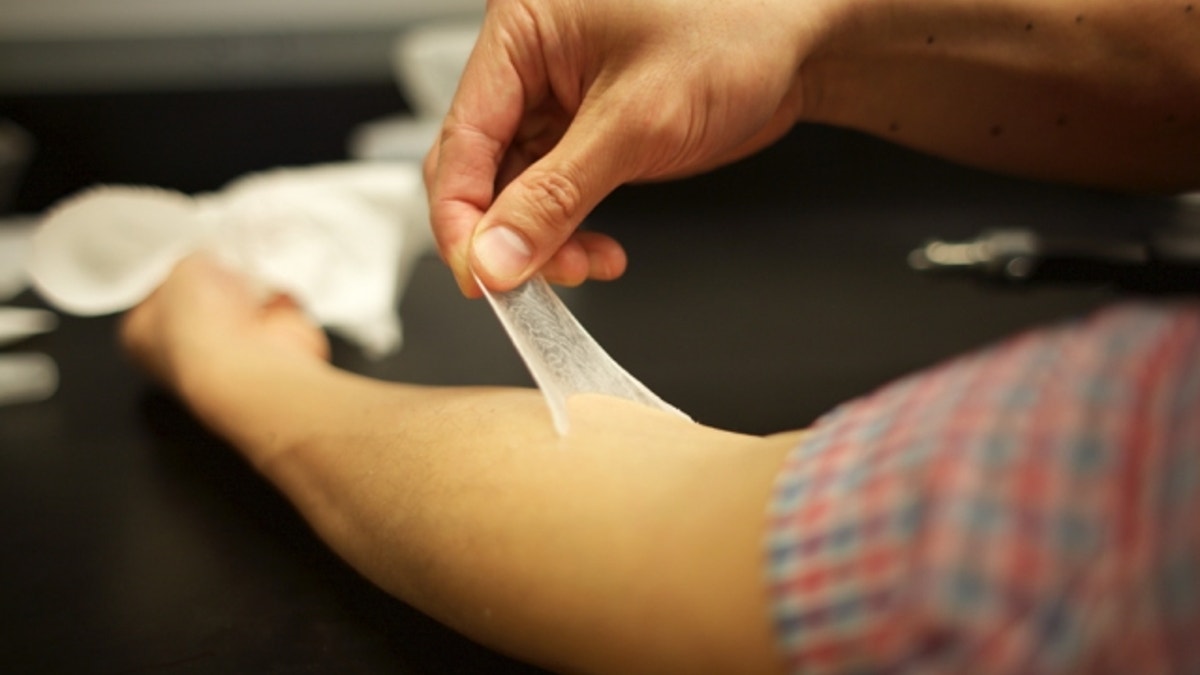
(Melanie Gonick/MIT)
A team of researchers at the Massachusetts Institute of Technology, led by world-renowned scientist Robert Langer, has developed an artificial skin that will shave years off your life -- aesthetically, we mean. The properties of the material give it an elasticity and durability that mimic healthy, youthful skin. When it is applied as a second layer over your existing skin, nobody will know that you are wearing it because it is so thin that it is almost invisible. The only catch: The change is only temporary. The second skin eventually loses its elasticity and the next day your face returns to its normal appearance.
Langer and his team of chemical engineers and medical researchers call this new skin XPL, for crosslinked polymer layer. It measures only 70 micrometers at this thickest point, making it half the thickness of a dollar bill. To make the skin taut enough that it smooths out wrinkles, Langer has developed a two-step process for applying the artificial skin. Researchers first lay down polysiloxane, a see-through silicone plastic that coats the skin. They then add a platinum catalyst that causes the polysiloxane to rearrange its molecules in a grid, which pulls the material taut against the skin.
More from Digital Trends:
These insanely thin LEDs let you put a digital display on the surface of your skin
This artificial skin can detect touch -- and it's made from tinfoil and sticky notes
Japanese scientists have created artificial skin that can grow hair and sweat
In a series of experiments to test the properties of the artificial skin, researchers applied XPL to human test subjects. They discovered that the material was only marginally helpful in keeping skin moist, but very effective at covering age-related facial changes, such as wrinkles and bags under the eyes. Using a 3D photography technique that can examine the surface area at skin level, the team found that the treated skin was almost twice as smooth as untreated skin. These age-reversing changes occurred almost instantly, producing measurable results only four hours after the XPL was applied. When the XPL layer loses its elasticity, users can easily peel it off their skin with no side effects.
Besides its potential for cosmetic use, researchers hope to use the second skin in a variety of medical applications. "It's an invisible layer that can provide a barrier, provide cosmetic improvement, and potentially deliver a drug locally to the area that's being treated. Those three things together could really make it ideal for use in humans," said MIT associate professor Daniel Anderson. Langer's breakthrough material is detailed in an article published recently in Nature Materials.




















